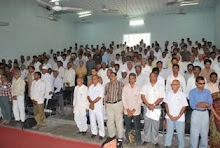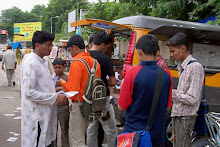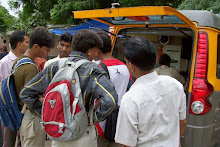Times
of India: New Delhi: Saturday, 28 March 2015.
Bird strikes don't cause as many air accidents as they used to till a
couple of decades ago, thanks to better resilience and backup mechanisms of
aircraft, but they continue to be a risk.
Delhi airport tops the list with the most number of bird strikes reported
in 2014 followed by Mumbai, Ahmedabad and Kolkata.
Information obtained by TOI through RTI from Director General of Civil
Aviation (DGCA) shows that Delhi airport recorded the maximum number of bird
hits, 146 which works out to almost 12 bird hits every month. It was followed
by Mumbai (69), Ahmedabad (61), Kolkata (55), Hyderabad (34), Kochi (24),
Chennai (22) and Bengaluru (18).
The number of bird strikes have increased year-on-year in Delhi. From 108
bird hits in 2011, the numbers rose to 129 in 2013.The number was 107 in 2012.
Delhi airport is also at risk from animal incursions too. There were six animal
incursions or strikes reported in 2014 at the airport.
Hyderabad airport has recorded the maximum number of bird hits among the
southern states in 2014. There were 34 bird hits in Hyderabad last year,
followed by Kochi (24), Chennai (22) and Bangalore (18).
Bird strikes can damage the aircraft's engine, wing flaps and fuselage thus
forcing the airlines to ground the plane and carry out expensive repairs. The
financial loss reported by domestic airlines due to bird hits and animal hits
has been increasing over the past few years - Rs 7.5 crore in 2010, Rs 12.27
crore in 2013 and Rs 25.72 crore in 2014.
Poor clearance of garbage, to which birds and their prey are attracted, in
areas surrounding airports is the primary reason. The increase in air traffic
has also contributed to the frequency of hits.
The number of bird hits at Chennai airport rose from 24 in 2010 to 32 in
2013, but dipped to 22 in 2014. This February, there have been five such
incident at the airport.
According to an airline official, the dip in the numbers at some airports
like in Chennai - from 32 in 2013 to 22 in 2014 - could be attributed to
underreporting than to preventive measures. That is, though bird hits get
reported at the airport, at times the directorate general of civil aviation
(DGCA) is not intimated.
DGCA said 162 cases of bird hits were recorded at Chennai airport in the
last five years. The airport ranked fifth in the number of hits across the
country since 2010. Throughout India, 71 airports reported 2,946 bird hits from
2010 to 2014. There has been a yearly increase in the number of cases - from
367 in 2010 to 669 in 2014.
Director of Institute of Bird Studies, Rishi Valley, V Shantaram, said
illegal slaughter houses, garbage dumps in the vicinity of airports cause bird
hits during take-off and landing. "Birds commonly involved in strikes have
adapted to living around concrete structures including airports," he said.
According to observes, birds that fly in dense flocks like gulls,
waterfowl, vultures and egrets are commonly involved bird hits. K V Sudhakar of
Madras Naturalists' Society said bird hits increase during winter because of
mass migration of birds.
"Some birds are attracted to water pools formed on runways during
monsoon. Tall grass on airport grounds serves as a breeding ground for mice,
snakes and frogs that attract birds. Pigeon population across the country has
also increased in the last few years, mainly because of the mushrooming
high-rise buildings," he said.
A senior DGCA official said they have constituted an airfield environment
management committee to ensure that no illegal slaughter house or garbage dump
exists near airports. "It is constituted at every airport to identify
sources of stray animals/bird attraction at the airport and take necessary
steps for bird strike prevention," said an official.
According to The Aircraft Rule, 1937 (rule 91) disposal of garbage in the
open within 10km of the airport is a cognizable offence attracting a fine of Rs
1 lakh or three-month imprisonment or both.














































































